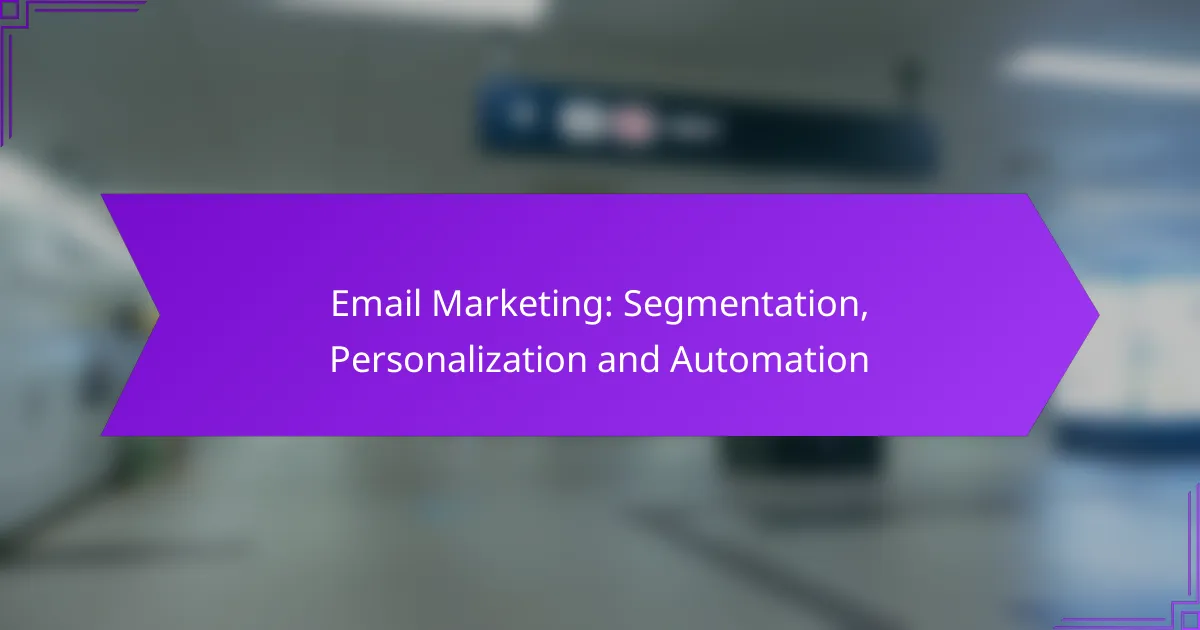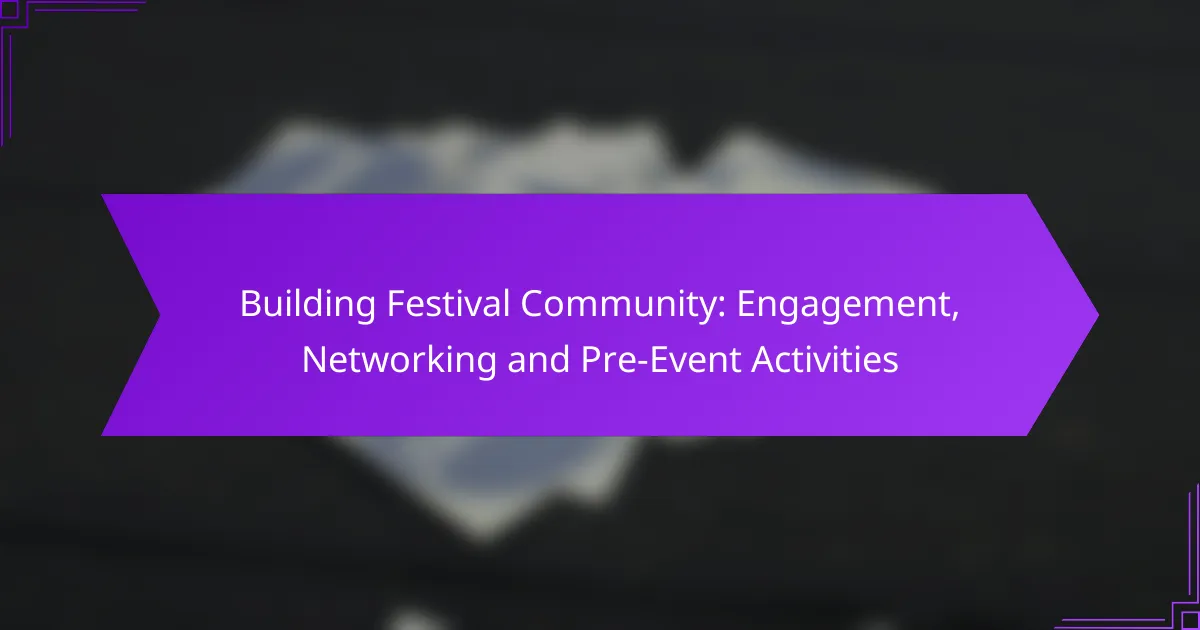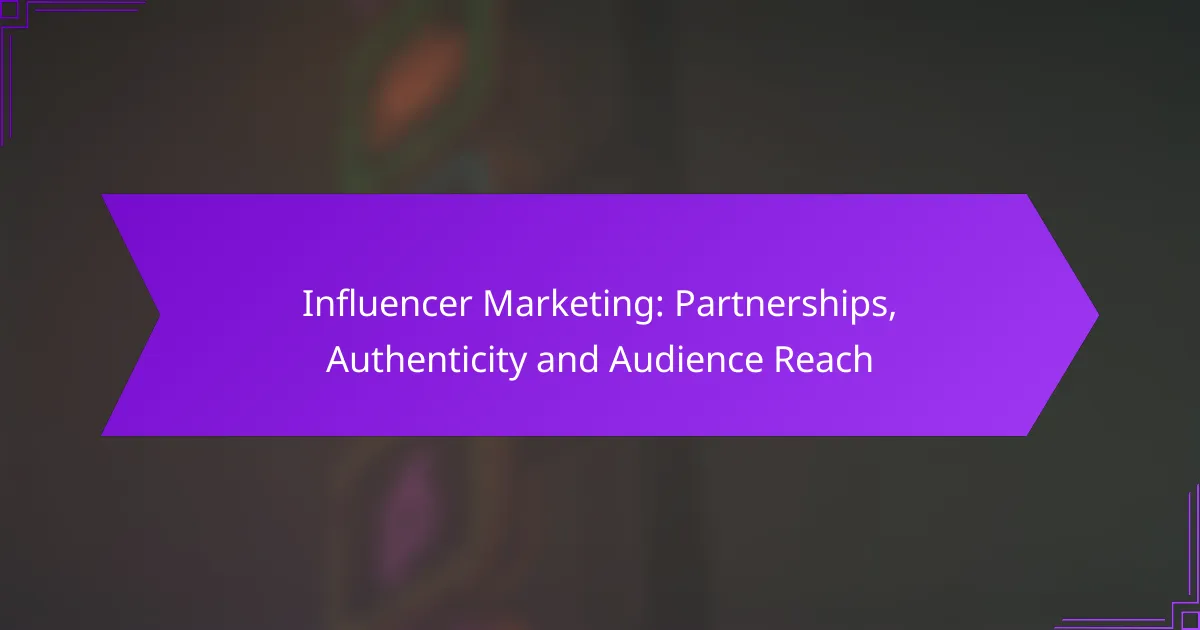Email marketing has evolved into a powerful tool that leverages segmentation, personalization, and automation to enhance engagement and drive conversions. By segmenting email lists, marketers can tailor messages to specific audience groups, ensuring that content resonates with each recipient. Personalization further refines this approach by customizing messages based on individual preferences and behaviors, while automation streamlines processes, allowing for timely and relevant communication. Together, these strategies create a more effective and efficient email marketing experience.
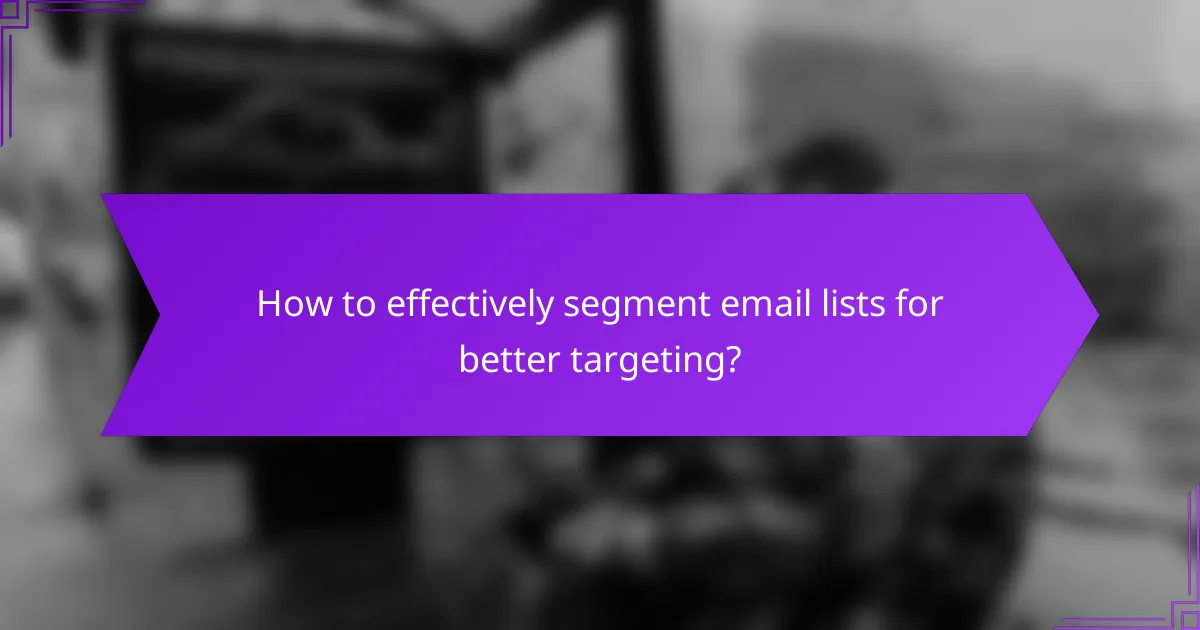
How to effectively segment email lists for better targeting?
Effective email list segmentation allows marketers to tailor their messages to specific audience groups, improving engagement and conversion rates. By categorizing subscribers based on shared characteristics, businesses can deliver more relevant content that resonates with each segment.
Demographic segmentation
Demographic segmentation involves categorizing your email list based on characteristics such as age, gender, income, and education level. This method helps in crafting messages that appeal to specific demographic groups, enhancing relevance.
For example, a fashion retailer might send different promotions to men and women or target younger audiences with trendy styles. Consider using surveys or registration forms to gather this data effectively.
Behavioral segmentation
Behavioral segmentation focuses on how subscribers interact with your emails and website. This includes tracking purchase history, email open rates, and click-through rates to tailor content based on user behavior.
For instance, you could create a segment for users who frequently open emails but rarely make purchases, offering them incentives to convert. Analyzing behavior helps in optimizing future campaigns for better results.
Geographic segmentation
Geographic segmentation divides your email list based on the physical location of subscribers, such as country, region, or city. This approach allows for localized marketing strategies that consider cultural differences and regional preferences.
For example, a restaurant chain might promote seasonal dishes based on local ingredients or events. Ensure your messaging aligns with local customs and holidays to enhance engagement.
Psychographic segmentation
Psychographic segmentation categorizes subscribers based on their interests, values, lifestyles, and personality traits. This deeper understanding of your audience helps in crafting messages that resonate on a personal level.
For example, a fitness brand might target health-conscious individuals with workout tips and nutrition advice, while promoting leisure activities to those interested in wellness. Surveys and social media insights can provide valuable psychographic data.
Engagement-based segmentation
Engagement-based segmentation focuses on how actively subscribers interact with your emails over time. This includes categorizing users as highly engaged, moderately engaged, or inactive based on their response patterns.
For instance, you can send re-engagement campaigns to inactive users, offering them exclusive deals to spark interest. Regularly updating your segments based on engagement levels ensures your content remains relevant and effective.
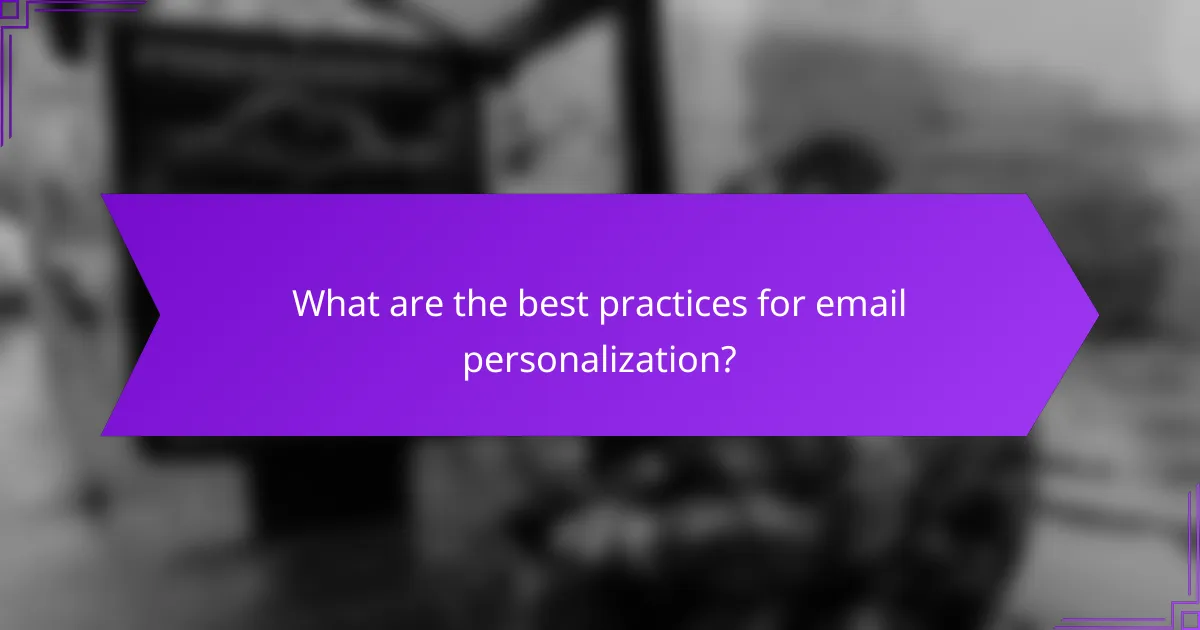
What are the best practices for email personalization?
Email personalization involves tailoring content to individual recipients based on their preferences and behaviors. Effective personalization can significantly enhance engagement and conversion rates, making it a crucial aspect of email marketing strategies.
Dynamic content personalization
Dynamic content personalization allows marketers to change specific elements of an email based on recipient data. This can include images, text, or offers that reflect the recipient’s past interactions or preferences. For example, an online retailer might show different products to a customer who frequently buys outdoor gear compared to someone who prefers home decor.
To implement dynamic content, use email marketing platforms that support this feature. Ensure your data is up-to-date and segmented correctly to maximize relevance. Regularly test different dynamic elements to see what resonates best with your audience.
Using recipient names
Incorporating recipient names into email greetings and subject lines can create a more personal touch. This simple tactic can increase open rates and engagement, as it makes the email feel more directed and less generic. For instance, addressing an email as “Hi John” rather than “Hi there” can foster a sense of connection.
However, ensure that names are correctly spelled and formatted to avoid errors that could detract from professionalism. A/B testing different approaches can help determine the most effective use of names in your emails.
Tailored product recommendations
Providing tailored product recommendations based on previous purchases or browsing behavior can significantly enhance the relevance of your emails. For example, if a customer frequently buys skincare products, suggesting new arrivals or complementary items can drive additional sales.
Utilize data analytics to track customer behavior and preferences. Make sure recommendations are updated regularly to reflect new products or changes in customer interests. Consider including a “recommended for you” section in your emails to highlight these personalized suggestions.
Location-based offers
Location-based offers leverage geographic data to provide relevant promotions to recipients. For instance, a restaurant chain might send special discounts to customers in a specific city or region, encouraging them to visit a nearby location. This approach can increase foot traffic and sales in targeted areas.
To effectively use location-based offers, ensure your email list includes accurate location data. Consider segmenting your audience based on regions and tailoring offers accordingly. Always comply with local regulations regarding data privacy when using geographic information.

How can automation improve email marketing efficiency?
Automation enhances email marketing efficiency by streamlining repetitive tasks, allowing marketers to focus on strategy and creativity. It enables timely communication with customers, ensuring that messages are relevant and personalized based on user behavior.
Automated welcome emails
Automated welcome emails are the first point of contact after a user subscribes, setting the tone for future interactions. These emails typically include a warm greeting, an introduction to the brand, and often a special offer or incentive to encourage engagement.
To maximize effectiveness, ensure that welcome emails are sent immediately after sign-up. Personalization, such as using the subscriber’s name or referencing their interests, can significantly increase open and click-through rates.
Drip campaigns
Drip campaigns involve a series of automated emails sent over time to nurture leads or engage customers. These emails are strategically timed and can provide valuable content, product information, or promotional offers based on the recipient’s stage in the customer journey.
When creating drip campaigns, segment your audience to tailor the content effectively. A common approach is to start with educational content and gradually introduce product offerings, ensuring that each email builds on the previous one.
Re-engagement campaigns
Re-engagement campaigns target inactive subscribers to rekindle their interest in your brand. These automated emails can include special offers, surveys, or reminders of the value the subscriber once found in your communications.
To implement a re-engagement campaign, identify users who haven’t interacted with your emails in a specified timeframe, such as three to six months. Craft compelling subject lines and content that encourage them to reconnect with your brand.
Triggered emails based on user behavior
Triggered emails are sent automatically based on specific actions taken by users, such as abandoning a shopping cart or browsing certain products. These emails are highly relevant and can significantly improve conversion rates by reminding users of their interests.
To effectively use triggered emails, set up tracking mechanisms to monitor user behavior on your website. Ensure that the content of these emails is timely and offers a clear call to action, such as completing a purchase or exploring related products.

What tools can enhance email segmentation and automation?
Several tools can significantly improve email segmentation and automation, allowing marketers to deliver more targeted and relevant content to their audiences. By leveraging these tools, businesses can enhance engagement, increase conversion rates, and streamline their email marketing efforts.
Mailchimp for segmentation
Mailchimp offers robust segmentation features that allow users to categorize their email lists based on various criteria such as demographics, purchase history, and engagement levels. This enables marketers to send tailored messages to specific groups, improving the relevance of their campaigns.
To effectively use Mailchimp for segmentation, start by defining your audience segments based on data insights. Utilize tags and groups to organize subscribers, and consider A/B testing different segments to optimize your messaging strategy.
HubSpot for automation
HubSpot provides powerful automation capabilities that help streamline email marketing processes, allowing for timely and relevant communication with subscribers. Users can set up workflows that trigger emails based on user actions, such as signing up for a newsletter or abandoning a cart.
When using HubSpot for automation, focus on creating clear workflows that guide subscribers through their journey. Regularly review and optimize these workflows based on performance metrics to ensure they remain effective and aligned with your marketing goals.
ActiveCampaign for personalization
ActiveCampaign excels in personalization, enabling marketers to create highly customized email experiences based on user behavior and preferences. This tool allows for dynamic content that changes based on the recipient’s profile, increasing engagement and conversion potential.
To maximize personalization with ActiveCampaign, gather detailed subscriber data and use it to tailor your messaging. Implement personalized subject lines and content blocks that resonate with individual recipients, and continually analyze engagement metrics to refine your approach.

What metrics should be tracked for email campaign success?
To gauge the success of an email campaign, key metrics like open rates and click-through rates should be closely monitored. These metrics provide insights into engagement levels and the effectiveness of your messaging.
Open rates
Open rates measure the percentage of recipients who open your email compared to the total number of emails delivered. A typical open rate ranges from 15% to 25%, but this can vary based on industry and audience engagement. Tracking open rates helps you understand how compelling your subject lines are and whether your emails are reaching the intended audience.
To improve open rates, consider A/B testing different subject lines and sending times. Avoid spammy language and ensure your sender name is recognizable to increase the likelihood of your emails being opened.
Click-through rates
Click-through rates (CTR) indicate the percentage of recipients who clicked on one or more links within your email. A good CTR typically falls between 2% and 5%, depending on the industry and the nature of the email. Monitoring CTR helps assess how well your content resonates with your audience and whether your calls to action are effective.
To enhance click-through rates, use clear and compelling calls to action, and ensure that your email design is mobile-friendly. Segmenting your audience can also lead to more personalized content, which often results in higher engagement rates.
